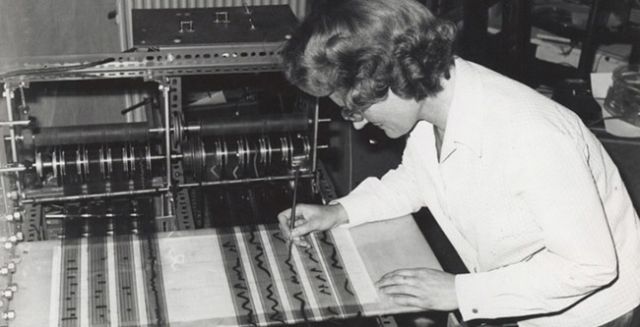#feministfriday episode 91 | And I have art to make
Good afternoon,
Three stories about lost art and lost things, in this Fem Friday! I hope you enjoy them.
Sarah Farro was one of two African-American women novelists from the 19th century, and it seems likely that she had some hurdles to overcome to achieve that. This is an interesting analysis of why she has been largely forgotten, and the sorts of stories that get remembered and forgotten:
After doing more research, I soon realized that Farro had made her mark writing about white people – and that this may also be the reason her work was forgotten. Learning of a black woman whose race was documented, whose novel was published – but who disappeared in the historical record – can change how we think about African-American literature.
https://theconversation.com/after-the-rediscovery-of-a-19th-century-novel-our-view-of-black-female-writers-is-transformed-60016
Seen via a Kickstarter, as I had previously not heard of Daphne Oram! She wrote a pioneering book on electronic music in 1972, fifteen years after cofounding the BBC Radiophonic Workshop. A real heavy hitter. Some excellent photos in this article too:
 She was the first Director of the BBC Radiophonic Workshop, which she co-founded in 1958, after years of persuasion and perseverance. She predicted that computers and electronics would revolutionise music decades before they became popular, and invented a new form of sound synthesis – Oramics – which was a significant step towards this revolution.
She was the first Director of the BBC Radiophonic Workshop, which she co-founded in 1958, after years of persuasion and perseverance. She predicted that computers and electronics would revolutionise music decades before they became popular, and invented a new form of sound synthesis – Oramics – which was a significant step towards this revolution.
https://www.kickstarter.com/projects/345013107/help-us-republish-daphne-orams-an-individual-note
Now we move onto the forgotten artefacts of the everyday, one of my favourite things. Vashti DuBois has turned her house (which she lives in) into a museum, which is a terrifying thought, but marginally less so than the thought of running a B&B:
In 2014, DuBois put a call out, through the nonprofit and arts communities she'd worked in, to black women in Philadelphia. She asked women, of all ages, to contribute artifacts that embodied their experience as girls—anything from coffee cups to heirloom paintings. She received a huge collection of objects, ranging from hand tools to a painting of the singer Lauryn Hill. Then she had 10 local artists each curate a room. For instance, the laundry room is a shrine to the concept of the washerwoman, a powerful concept for many of the women. “For a lot of women of color, our grandmothers took in laundry. It’s very personal, and that history was not that long ago,” she says
http://www.smithsonianmag.com/innovation/pop-up-museum-documents-stories-philadelphias-black-women-180957996/?no-ist
Enjoy your Friday,
Alex.